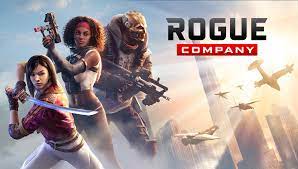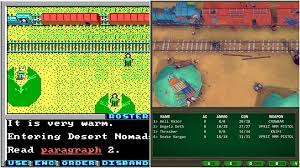As a child of the 80s I was a fan of Battlestar Galactica, with Face from the A-Team as a main character, and the ridiculous acting and poor sets that the show featured. As I’ve grown older, I’ve never completely forgotten the enjoyment I used enjoy watching it. I have really enjoyed the latest series, which has more modern-day effects replacing the sloppy older ones. When I came the news of a brand new game that combines my love of Battlestar Galactica with my more lately awed of strategic games, I I had to take an examination. This game’s name will be Battlestar Galactica Deadlock and is coming from the brilliant folks the at Black Lab Games it is promising to combine two of my passions into a gooey puddle of deliciousness. Does the game live up to its promise or is it an uninspiring failure?
The background of Battlestar Galactica, in case you’ve been living in a cave, is that Humanity created a mechanical race called the Cylons and were forced to serve as their servants. The experiment went as smoothly as you’d expect but then the Cylons protested and then went on to create AI, which decided that what they needed was a planet (or 12 as there were twelve colonial colonies from the initial game and the game too). Over the years, wars have been waged, but neither side gaining the victory. But, when Battlestar Galactica Deadlock opens, the Cylons have successfully launched an utterly devastating attack on their Colonial High Fleet Command on the island of Picon. There was a high-ranking officer who was not there at the time – Rear Admiral Lucinda Cain. And she has to take the helm and lead the fight. When I say that she should assume command, she basically is telling us, as commanders that she would like to see take place and we must help create it.
There are three main options you can play Deadlock. There is an option to play in a “Skirmish” mode, where you choose the amount of points you would like the fleet to earn (each ship has a value in points, and is able to be added to the fleet until the limit is reached) Then, two fleets play an immense ruck until the other is defeated. There’s a multiplayer mode as well, which I found to be very exciting, with both co-operative and versus missions however, the Cylons probably killed the other players in the game because I couldn’t play the game online for the love of it or for money. It didn’t matter if I tried to find games or attempted to host one; there was no multiplayer entertainment was offered. Naturally, the final and important is the campaign, with a compelling story to follow through to the end. That’s where I’ve spent most of my time and that’s the place you’ll need to be as well.
What it leads to is a classic strategy game with twists. Imagine your world in Command & Conquer with all the small units that you can create and use to execute your will. One thing games such as C&C are lacking is a 3 dimension element and that’s where Battlestar Galactica Deadlock begins to reveal a clear blue water (or the dark space) between it and its rival games. Space is where there is no limit to move around in any direction as well as upwards and downwards and figuring the position of your ship relative to your opponents can be a challenge for sure. It is obvious that if the guns are located on the uppermost part of your ship and the enemy is beneath it could be difficult to strike them as well as vice versa. Therefore, when you try to place your troops and position them, it’s no longer enough to think about whether they can be hit by an enemy from their position and you must think in three dimensions.
The rest of the fight is fairly standard. There are a number of turns, during which both you and your adversaries are able to plan your strategy in the midst of nothing happening and then relax, after your turn is over and watching the outcomes of your nifty tactical strategy unfold. If you’re like me, you can watch as one of your beloved Corvettes smashes into an moon while your Viper squadrons try to fight the largest Cylon Battleship on the map. Both of these scenarios don’t end with a flourish.
If it’s your turn, you’ve got some choices. The larger ships in your fleet may be equipped with Viper fighters as well as guided missiles on in addition to the traditional turret weapons that they’re outfitted with. Guided missiles are great they can be fired and forgotten and they’ll strike the targets you choose, however they can take time to reload and ready to fire again. Each ship is equipped with 10 missiles and they are only shot at hostile vessels that are identified as such, typically by an Viper close to. Vipers are launched by squadrons and can be used offensively, and then for fighting, or defensively or kept near your larger vessels in order to fight Cylon fighters. I like using the latter option, since they Vipers are so much more agile than larger vessels that they are able to quickly arrive at a target, and then begin fighting. Each ship can be assigned a target to concentrate their firepower and when they’re close to the target they will launch turret-based devastation and destruction. Naturally, focusing fire on the closest threat is a smart idea.
This is the combat aspect of the game. the other is of the management of fleets. After you have completed missions, you’ll unlock new blueprints for munitions and ships. Additionally, when you complete missions, you’ll lose some ships. It is almost inevitable. However, you are able to use the screen for fleet management to construct more ships, so you’ve got enough Tylium. Tylium is awarded once you have completed a mission and also is given to you by twelve colonies. When you begin to build your army, you’ll be able to acquire more and more vessels which can be grouped into multiple fleets. A fleet that is parked in a colony can be considered strengthening it. A reinforced colony will feel more safe and will offer more resources to you. This allows players to build larger and better ships all the way to the massive Battlestars that can almost dominate the map once they’re deployed. They aren’t accessible until later on in the game however, seeing them swarm in and begin taking down the enemies is quite thrilling.
Of course there’s a chance that the Cylons don’t sit on their laurels and will continue testing new vessels your systems, such as the Nemesis class that has the ability to attack your vessels, which could lead to the fire control systems being shut down, for example or vessels which can board your ships and force them to take an aggressive posture as they are able to repel the people who are boarders. There’s plenty to learn and plenty to know about, and there’s no way to avoid it. about it.
This will lead me to an analysis of things that aren’t right with Deadlock. It was clearly designed around a computer control model that includes the mouse and over 100 keys to be played with. Making it easy to simplify all of this and making it controllers hasn’t worked to my knowledge, at least not in the way I’d like. Let me offer an example of this – it’s actually the work of a number of menus and a lot of button presses to initiate a mission even if you are able to see the mission’s location on the map of the galaxy that which you can access on your command window. Here you must locate the mission, click “X”, then move left and right on the D-pad (not the stick!) until you locate the briefing, click “A” to listen to it, and then hit “B” to go back to the location you found the fleet you’d like to send to the mission, and press “A” on it, then choose “jump”, choose the jumping location, press “Y” and then hold “Y” to end the turn, and send the fleet out on its journey. It’s not even the start of the mission.
Additionally the map in-mission is either small and messy and cluttered, or you may be so close to the map that you’ll lose particulars from the larger image, and possibly be unable to see a vessel being destroyed. It can be difficult to determine the exact location of a unit can be difficult, made more difficult because friendly soldiers are marked with markers in red on the map and enemies have a blue marker. For me, in my simple mind, reds are considered to be enemies, while blues are friends, so this can cause some problems. There’s no way to tell which the camera is scanning which means that when you would like your ships to on firing, they must sit in a limbo while you scan the entire galaxy trying to locate a target that which you can select. It’s true that there’s plenty of enjoyment to be had but I’m left with the thinking it could be much simpler to play.
Today, Black Lab Games have not stopped at resting on their laurels since the game’s launch in the year 2017. (a release date that may be the reason for the absence of multiplayer games) they have also released two seasons of DLC. I had the chance to test a couple of these packs, namely Sin and Sacrifice and then Broken Alliance. They are both incredibly enjoyable and do not just include additional stories, but each of them also grants access to additional ships, as well on both one side and on the other. Alliance side, and also The Minerva Class Battlestar and Assault Raptor. Then, they give additional ships to Cylons as well, such as that of Argos Class Basestar – bigger and more robust than the Basestars which we’re used to. The way The storyline of Deadlock is further developed by this pack makes it worth the time with, and with six DLC packs with a wealth of content that you can see.
As a conclusion, Battlestar Galactica: Deadlock is an excellent game at least on the system it was designed for. For Xbox One however, with limitations of the controls it’s still a thrilling strategy game, however it’s really struggling with the immense amount of complexity available. Game similar to the Arbiter’s Mark are designed around a controller and are therefore enjoyable to play with simple controls and easy to remember the inputs. Deadlock isn’t as easy, and although it is a long time to finish but it’s satisfying enough to make the effort worth it. As a strategy game it’s an interesting proposition If you’re looking for an adventure, it’s definitely worth a look.




